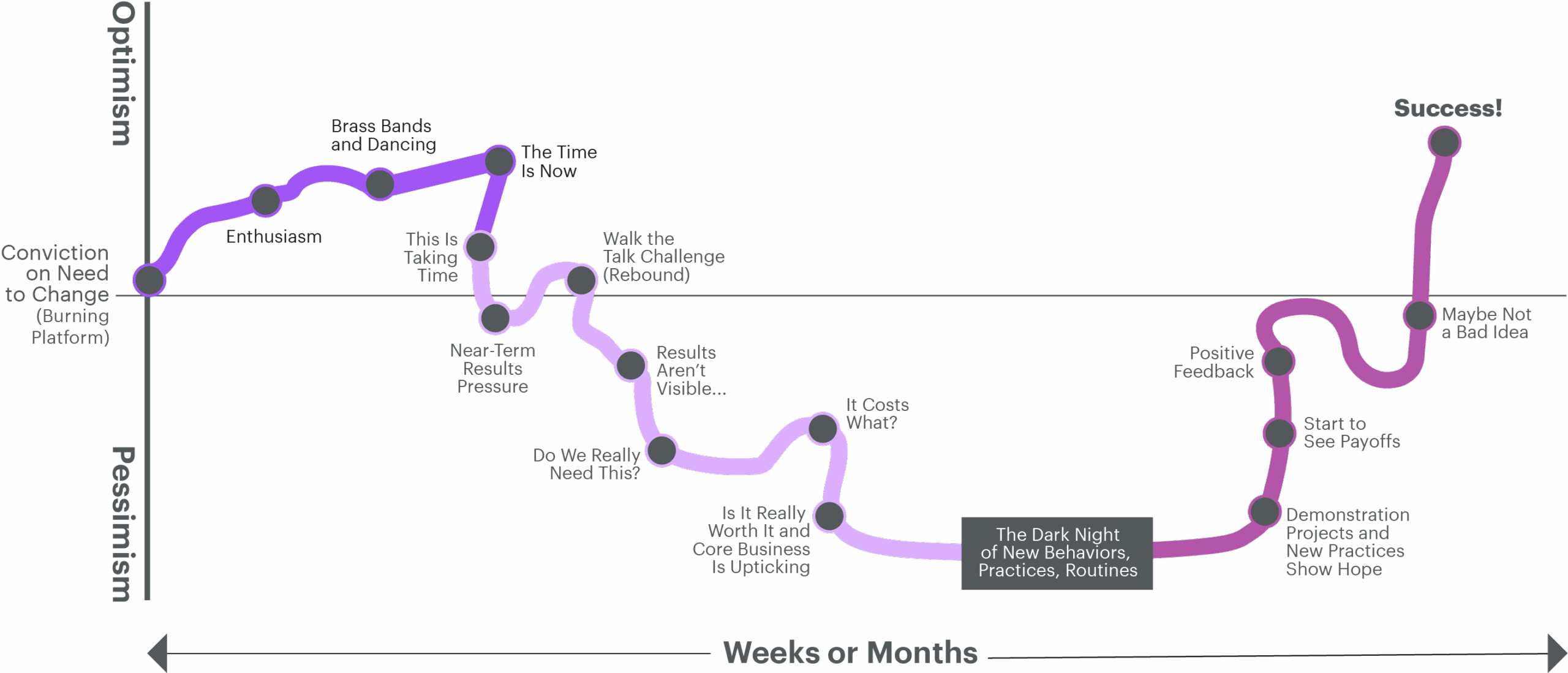This is part of a series of articles written by Aastha Minocha (Principal, Health Transformation) and John Schantz (Managing Director, Strategic Accounts) focused on the topic of Strategy Activation.
Part One: Leading Through Uncertainty | Authentic Presence
Part Two: A Roadmap for Creating Shared Meaning
Part Three: Starting a Movement
Perhaps you’ve heard this story:
Once, there was a big company with many business units spread across multiple geographic areas. The organization was doing well, having some success, and was even experiencing modest growth. However, the desire to grow was too strong to ignore, so the company decided to speed up its growth through mergers and acquisitions. After all, growth offers tremendous potential – the opportunity to serve more customers, satisfy shareholders and boards, expand the brand, and give more career opportunities to employees.
But years after coming together, the promises of potential are still just promises. While the top line is growing, the other benefits aren’t evident. Not only that, but some other concerning realities have cropped up:
- Customer and employee experiences vary significantly from site to site.
- Technology systems are antiquated and don’t talk to each other, so people create workarounds and shadow processes.
- People feel more loyalty to their origin company or site and still refer to themselves that way.
- Decision-making is complex and slow.
- Redundancies are everywhere.
- Resources are hidden so they can’t be accessed by others.
- Various parts of the organization actually compete with each other in the marketplace.
- Employees lose their sense of purpose and belonging.
The result is rising costs, escalating shareholder and board frustration, and the unrealized promise of being together.
I’ve met countless leaders and employees over the years who’ve told me some version of that story. Maybe you’re one of them. And, although some of it should be expected, why does this happen?
Take this typical change process chart we had some fun with. It shows how problematic transformative change can look – even when it goes well.

Leaders typically need to make some important changes to reach success. They may choose to restructure, rethink comp models, revamp processes, invest in new technologies, and on and on. Many of these might absolutely be critical. But let’s not forget one simple fact – human beings work here. And transformations normally get stuck, and sometimes never recover, during the “Dark Night of New Behaviors, Practices, and Routines.”
So what’s the key for leaders to avoid or minimize being stuck? There are several things, but let’s focus on a critical one: be crystal clear on the behaviors that reflect a truly integrated, well-functioning organization and shine a bright light whenever and wherever those behaviors are demonstrated.
I’ve had the good fortune of working with many organizations that got it right – they were able to make the shift from a group of individual businesses or units to a more integrated enterprise. When I asked their leaders how they knew they were making progress on operating more as one, they said they observed some of these scenarios:
- A utility’s longtime billing department employee embraced a new system eliminating a workaround process that had come to define her job. Accepting this change let her use the time saved to benefit customers.
- An academic medical center physician presented to colleagues how some recent research factored into high-end quaternary care. His explanation included how the various parts of the system helped shape it.
- A nurse from a national faith-based health system was overheard answering questions from a patient about the hospital’s new logo. She said it was more reflective of the system the hospital was a part of and how being a part of the larger organization ultimately benefits patients.
- A national water utility director met with his managers to clarify which decisions should be elevated and which could be made locally to improve employee and customer experiences.
- A sales rep at a large equipment rental company discovered new opportunities outside her business unit during a contractor meeting. Understanding the broader possibilities, she pulled a colleague into the next conversation to expand the deal.
- A manager at that same equipment rental company supports his employees’ efforts to advance and even to interview at a different site – despite knowing it would create a hole within his team.
These are just a few of the countless examples taking place in these organizations. The people involved were clear about how they could support the larger effort to operate as one. The leader’s job is to set clear expectations on the desired behaviors and then shine a light on those examples for others to see.
And when done early and often, that leader can leave the Dark Night of New Behaviors, Practices, and Routines in the rearview mirror.








